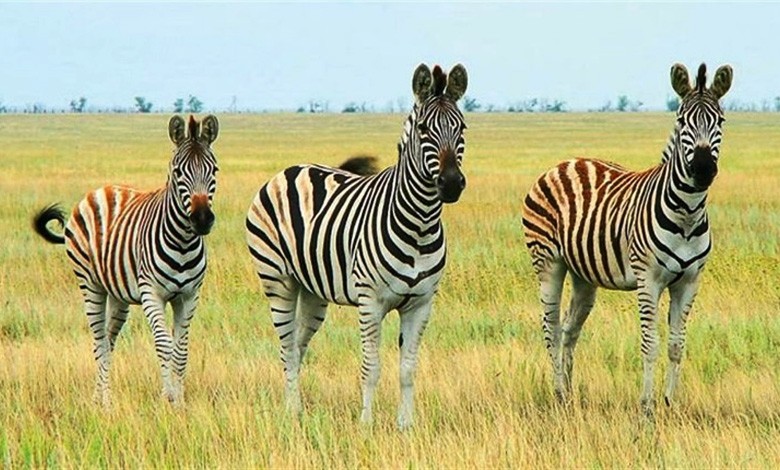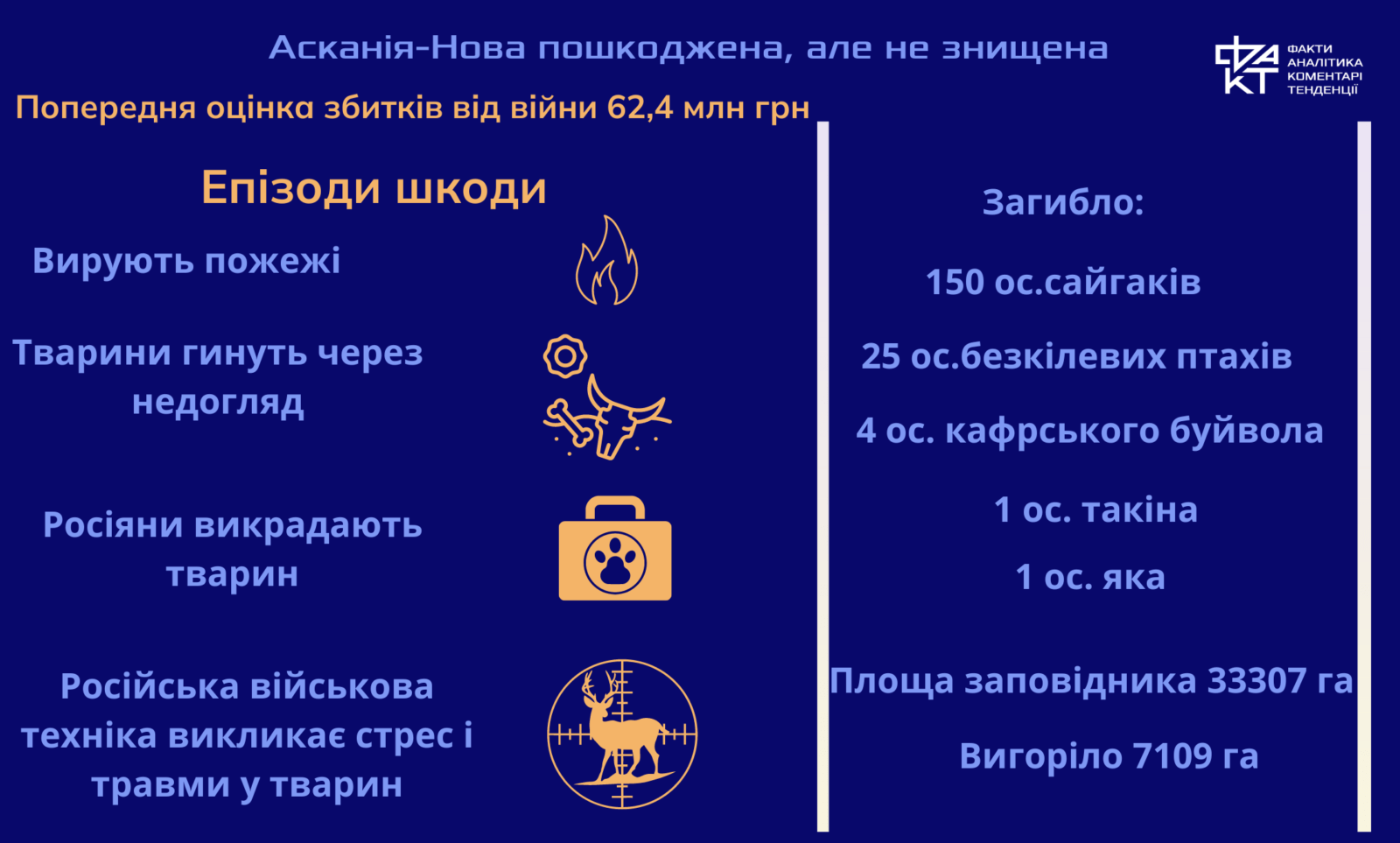A silent victim of war: will Russia bear responsibility for ecocide in Ukraine?

Russian weapons not only take lives of soldiers and civilians, they destroy the environment. So the war becomes a catastrophe not only human, but also ecological. The Ukrainian Environmental Protection Agency estimates the damage caused by the war to forests, soil, air, and water at more than 57 billion euros. Fauna, unique ecosystems of nature reserves are also suffering from Russian aggression, and biodiversity is being destroyed.
“The environment must no longer remain the silent victim of war.” – said the Minister of Environmental Protection and Natural Resources Ruslan Strelets in yesterday’s interview with the publication German wave.
“Humanity must understand that war is expensive. Environmental destruction is expensive.” – said the head of the nature protection department.
According to him, about 500 sewage treatment plants were destroyed in Ukraine and at least 20 percent of nature reserves were under threat. One of them is “Askania-Nova”.
The sad information about “Askania-Nova” is an exaggeration
The other day, there were sad reports in the media about the complete destruction of the reserve. All of them refer to a single source – an interview with the head of the Kherson Regional Military Administration Oleksandr Prokudin, who in desperation uttered the phrase “the reserve no longer exists.” The journalists of Suspilny decided to check this statement and turned to the director of the reserve “Askania-Nova” Viktor Shapoval. He assured that Prokudin’s phrase that the reserve no longer exists was taken out of context. The facts of the removal of animals do take place, but there is no question of the complete destruction of the reserve.
The director confirmed that 20 rare animals were exported to Russia and the temporarily occupied territory of Crimea. Some of the animals died due to neglect, lack of qualified scientific support and veterinary care. A large part of the unique protected steppe, more than 2,000 hectares, burned down as a result of fires of various nature.
 Infographic: IA “FACT”
Infographic: IA “FACT”
Recently “Social. Crimea” reported that the director of the Crimean zoo “Taigan” Oleg Zubkov makes money from red book animals from the Kherson region. Since the “Askania-Nova” nature reserve came under occupation, the management of “Taigana” constantly talks about the “rescue” of rare animals through propaganda resources and social networks. According to the director of the reserve Viktor Shapoval, the most exported to Crimea are Chapman’s zebras – exotic animals with a high market value. Taigan got seven females of this rare species, which involves selling, exchanging or other ways to make money from these exotic zebras. The total number of animal transport raids is twelve. In addition to zebras, bison, David’s deer, and Przhevalsky’s horses were moved to the Crimean zoo. By the way, the founder of Askania-Nova, Friedrich Falz-Fein, brought the horses kept in the reserve to the Kherson steppes during one of his hiking expeditions to Mongolia. The ecosystem of the reserve became their natural habitat. The scientific experiment on the adaptation of these exotic animals in the steppes of the Kherson region lasted for more than 140 years. Removal of this species outside its usual range is an irreversible loss for science.
Before the start of the full-scale invasion, more than 3,000 species of animals lived in the “Askania-Nova” nature reserve. 34 of them are rare species. Some of these species are already practically lost. From the very beginning of the reserve, preference was given to breeding ungulates that were associated with steppe or forest-steppe landscapes.
A silent victim of war
In addition to the visible effects caused by animal abduction, there are also long-term, less visible damages that the environment suffers. Among them is environmental pollution with heavy metals.
According to Oleksiy Vasyliuk, head of the Ukrainian environmental organization Nature Conservation Group, the degree of pollution and damage can only be assessed in individual territories, because it is extremely difficult to collect data. The Ukrainian public organization “Ekoaktsia” managed to take soil samples in some areas, in particular in Donbas. The analysis showed that as a result of hostilities, the entire soil is contaminated with highly toxic heavy metals. In some cases, mercury, vanadium and cadmium values have been exceeded by a hundred times. We remind you that heavy metals are extremely toxic in high concentrations, because they can accumulate in the body and often cannot be broken down.
Vasyliuk suggests that Russian aggression will have long-term consequences for the environment: the damage to the air, water and soil will be felt decades after the end of the war. In some parts of the land, it will be impossible to conduct agriculture for a long time.
Create a precedent in environmental protection
The United Nations classifies environmental destruction as a war crime only if it is disproportionate to the military benefits obtained by the perpetrator and results in serious, widespread and lasting harm to the population. In February of this year, the chief prosecutor of the International Criminal Court, Karim Khan, announced his intention to strengthen the prosecution of crimes against the environment. So far, no country or individual has been convicted of war crimes related to environmental destruction. This is partly due to unclear definitions in international law, as international law expert Aaron Dumont points out. He notes that proving that the effects of environmental destruction caused by shelling or other military action will still be felt ten years from now has been extremely difficult to do in the past.
He cites the environmental crime of 1991 as an example. During the Gulf War between Kuwait and Iraq, Iraqi forces set fire to more than 700 Kuwaiti oil fields during their retreat, causing an environmental disaster throughout the region. “Any sane person would say this is a war crime against the environment.” Dumont notes.
“But in the 1990s, it was very difficult for geologists to prove that the effects of these fires could be measured ten years later. Methodologically, it was impossible.” Today, the situation has changed thanks to satellite images and improved scientific methods. So Dumont admits that the prospects of a successful lawsuit against Russia in certain cases look quite promising.
This applies, in particular, to the undermining of the Kakhovskaya dam. If there was a verdict, it would be an important breakthrough in environmental legislation.
Damages for decades
Environmentalists warn that the damage Russia is inflicting on Ukraine’s forests, steppes and reservoirs will last for decades, and the war’s legacy will continue to threaten long after the last shots have died down. That is why it is important to draw the attention of the international environmental community to the crimes of the aggressor country against Ukrainian nature. It is important to set a precedent, and such attempts are already being made by our relevant officials. In particular, the Prosecutor General of Ukraine Andriy Kostin hopes to form the basis for the prosecution by the end of the year. The Minister of Ecology, Ruslan Strelets, also demands that Russia be held accountable. He seeks to set a precedent and develop appropriate international law enforcement procedures so that war on the environment does not go unpunished in the future.
Ukrainian state institutions, civil society organizations and international agencies have already collected an unprecedented amount of data about the impact of war on the environment, which is his silent victim.
International law requires that methods and means of warfare be used with due regard for the protection and preservation of the natural environment. Russia’s actions will be judged not only in terms of treaty violations, but also in terms of the extent to which these environmentally destructive actions were justified from a military point of view. In order to achieve a just and lasting peace, it is necessary to withdraw Russian troops from the occupied territories, carry out large-scale rehabilitation of the affected individuals and communities, compensate for the damage caused, as well as restore the natural and anthropogenic environment of Ukraine.





